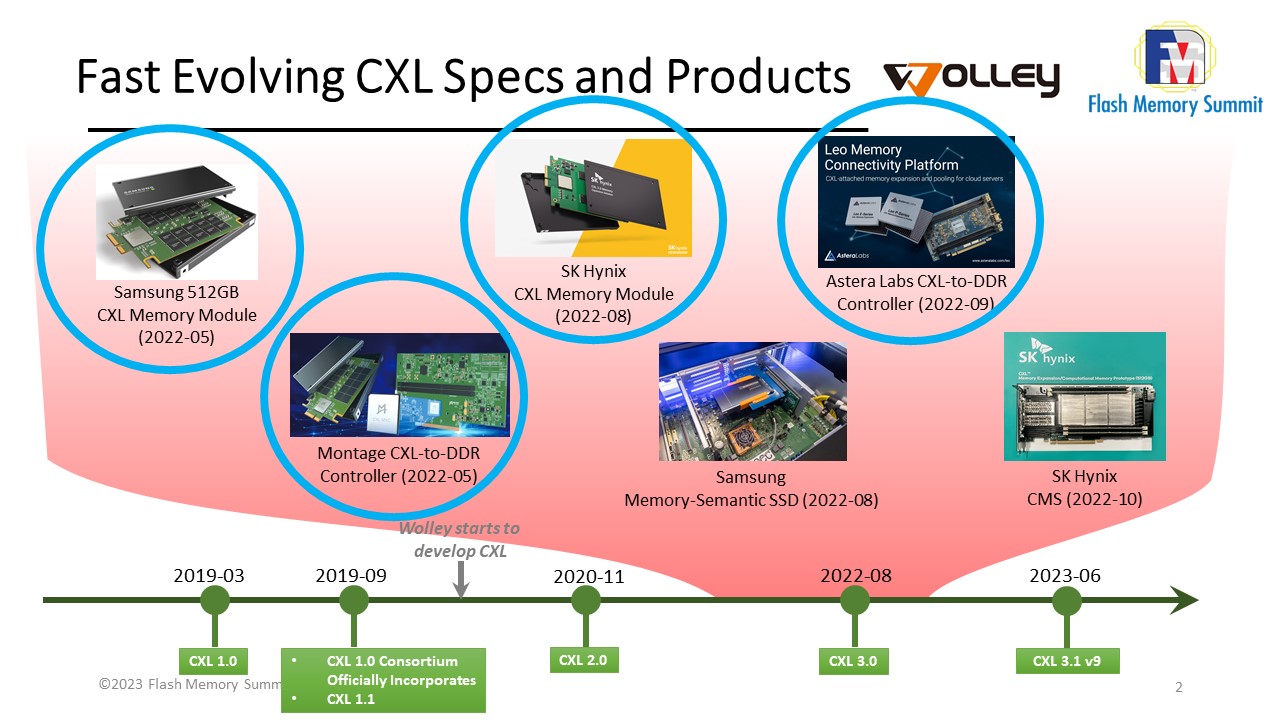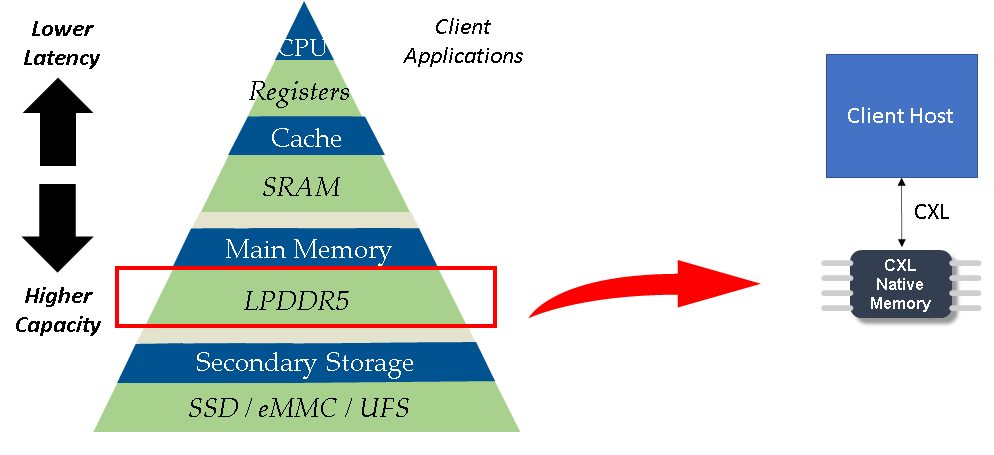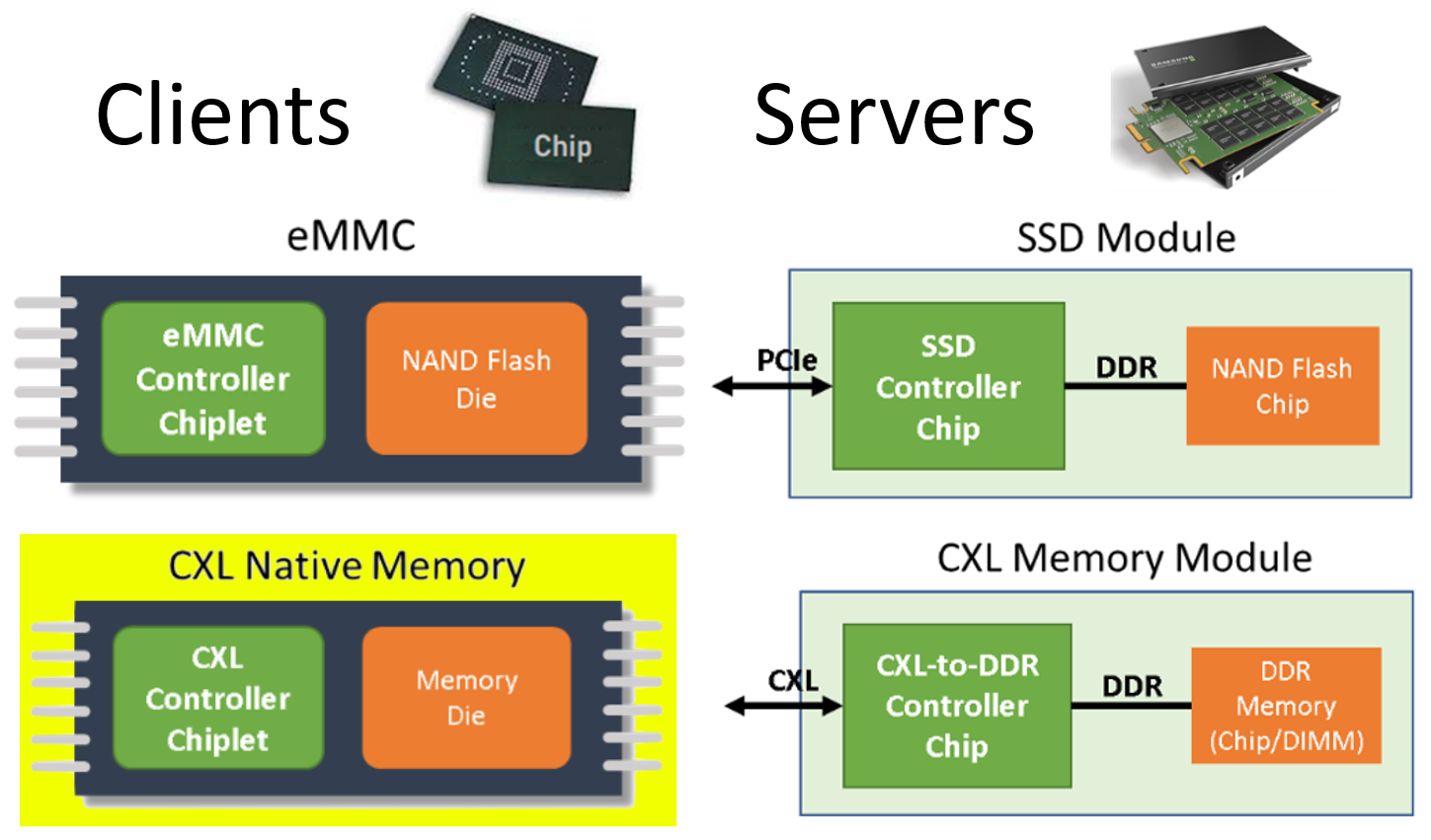Since the introduction in 2019, Compute Express Link (CXL) has been rapidly evolving, driving a proliferation of wide applications. With each specification version upgrade, from 1.0 to 3.0, CXL has expanded its capabilities like switching, peer-to-peer messaging, and 256-flit mode.
- Empowering Servers with CXL Memory Modules
Since 2022, we have witnessed a significant rise in CXL application demonstrations. Among them, CXL memory modules have become the focal point of CXL development. Many companies are actively constructing CXL memory modules, positioning them as the new frontier of memory resources for modern computing architectures.
CXL memory module is composed of a CXL-to-DDR controller and DDR memory chips, providing a seamless CXL interface to communicate with the host system. These kinds of type-3 devices are designed to expand the memory capacity of servers efficiently. In particular, the memory disaggregation enabled by CXL opens doors to a variety of usage models and makes CXL memory modules highly valuable in server environments. Memory expansion, memory pooling, and memory sharing become seamless with CXL capabilities.
- What is CXL Native Memory?

While much attention has been devoted to exploring the advantages of CXL in server applications, can CXL also offer benefits to client applications, such as mobile devices, laptops, and cars?
Traditionally, the memory hierarchy in client devices has only focused on main memory and secondary storage, with LPDDR being the main memory. In this context, the concept of "far memory" and features like memory pooling and sharing are impractical and not applicable.
CXL Native Memory refers to a memory chip that is able to directly connect to a host processor through CXL interface, bypassing the need for an intermediate CXL switch or the host memory controllers.
- Client-usage Memory: CXL Native Memory vs. LPDDR Memory

To highlight the difference between CXL Native Memory and LPDDR Memory, this comparison considers making both interfaces have a similar bandwidth. CXL utilizes PCIe Gen5 with 8 lanes (256Gbps), while LPDDR5 employs two 16-bit chips running at 6.4GT, resulting in comparable performance.
CXL is a serial full-duplex interface, while LPDDR5 operates on a parallel half-duplex interface. There exists a common intuition that CXL might exhibit longer latency compared to LPDDR5 due to its serial interface requiring serial-to-parallel or parallel-to-serial conversion during data transfer. While this might be true from a single-command transfer perspective, is it still true when we consider real applications?
Actually, our simulation and findings challenge the common perception, revealing that in practical scenarios, CXL latency is not significantly different from LPDDR5, and even much better. By running real-world application benchmarks, we showcase that the true potential of CXL native memory and is a promising memory component for client users.
- CXL Native Memory vs. CXL Memory Module

CXL Native Memory is an integrated packaged part containing a CXL controller chiplet and one or more memory dies. In contrast, a CXL Memory Module is a plug-in mechanical assembly with a CXL-to-DDR controller chip and many DDR memory components.
Think of the relationship between CXL Native Memory and CXL Memory Module as akin to the distinction between eMMC and SSD. We firmly believe that CXL Native Memory holds high potential for client applications, offering significant advantages in terms of die size, power consumption, and overall performance.
- Join the Movement: A Call to Embrace CXL Native Memory for the Future
Our call to action to client, mobile, and automotive users is to seriously consider CXL Native Memory as the next-generation memory component. Throughout this discourse, we have emphasized numerous technical advantages, including improved bandwidth, reduced application latency, and a smaller footprint compared to traditional DDR memory.
One significant advantage lies in how CXL Native Memory simplifies memory management for client hosts. The built-in CXL controller takes charge of memory media management, liberating the host memory controller from this burden.
Embracing CXL Native Memory offers a seamless and highly efficient memory solution. We strongly encourage you to explore the countless possibilities and advantages it brings.